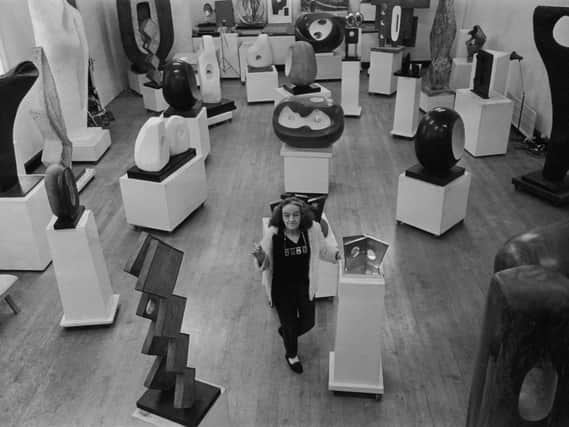A look back at Dame Barbara Hepworth's life and career


Born in Wakefield in 1903, Barbara Hepworth attended Wakefield Girls’ High School. In 1920, she won a scholarship to Leeds School of Art, where she met fellow sculptor Henry Moore.
As the world marks the 45th anniversary of Hepworth’s death, we take a look back at her life and career.
Advertisement
Hide AdAdvertisement
Hide AdHepworth was one of the leading practitioners of the avant-garde method of Direct Carving, which saw artists work directly on the chosen material, instead of making preliminary models that would then be translated into its final form by craftsmen.
In the years since her death, her work has continued to influence the world of sculpture, and a gallery in her name, opened in her home city in 2011, now draws more than a million visitors a year.
Following a period of study at the Royal College of Art in London, Hepworth was awarded a Awarded a West Riding Scholarship for one year’s travel abroad.
She spent the next months in Italy, based on Florence, where she worked alongside fellow sculptor John Skeaping.
Advertisement
Hide AdAdvertisement
Hide AdThe pair married in 1925 and later spent time living in Rome and London before welcoming son Peter in 1929.
In 1934, Hepworth welcomed triplets Simon, Rachel and Sarah Hepworth-Nicholson with artist Ben Nicholson, whom she would later marry.
Unusually for the time, she chose to continue working while raising her children, and later said she felt “nourished” by the experience.
Her work was by now on display around the world, from Oxford and London to Amsterdam and New York, as well as travelling exhibits. The family lived in London, but frequently travelled.
Advertisement
Hide AdAdvertisement
Hide AdFollowing the outbreak of the Second World War, Hepworth and her family relocated to St Ives, Cornwall, along with many other artists. Later, she would move to Trewyn Studios in the town, where she lived until her death.
The family were cramped for space, leaving Hepworth unable to produce any major works until 1943.
In the meantime, her work is displayed in exhibits in London, Halifax, Wakefield and Temple Newsam.
IUn 1961, Hepworth acquired the Palais de Danse , close to her home. Following a major exhibition at the Tate Gallery in London, she received an honorary degree in literature from Oxford University in 1968.
Advertisement
Hide AdAdvertisement
Hide AdIn September of the same year, she was made a bard of Cornwall, in honour of her work. She took the name Grayvor, meaning sculptor in Cornish.
The same year, the Honorary Freedom of the Borough of St Ives was conferred on Hepworth and her friend the potter Bernard Leach, accompanied by exhibitions of their work in the town.
During her time in St Ives, Hepworth worked alongside a number of other sculptors, and co-founded the Penwith Society of Arts.
On May 20, 1975, Hepworth was killed in an accidental fire at Trenwyn Studio.
Advertisement
Hide AdAdvertisement
Hide AdThe following year, her family reopened the studio opened as The Barbara Hepworth Museum, which is now managed by the Tate Museum.
Following the decision to grant the Palais de Danse Grade II listed status, it is hoped that the building will also be renovated and become part of the museum. Her family have continued to promote her work and legacy.
Click here for more images from Hepworth's career.